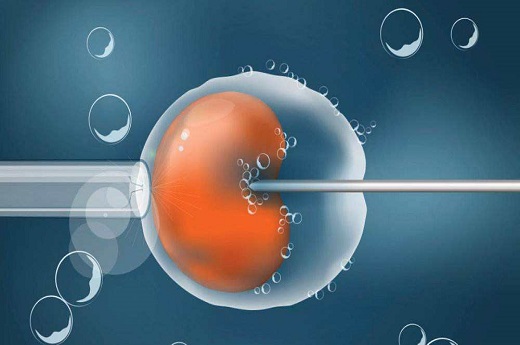Improving the Success Rate of IVF through Post-Examination Process
In this article, we will explore the post-examination process for IVF and the technologies that have been developed to improve the success rate of IVF. We will discuss the various steps involved in the post-examination process, including genetic testing, embryo selection, and embryo transfer. Additionally, we will examine the latest advancements in technology that have contributed to the increased success rate of IVF.
Genetic Testing
The post-examination process for IVF begins with genetic testing. This involves analyzing the genetic material of both the prospective parents and the embryos to identify any genetic abnormalities. Genetic testing can help to identify genetic disorders that may be passed on to the child, allowing for the selection of healthy embryos for implantation.

Genetic testing can also help to identify chromosomal abnormalities in the embryos, which can significantly impact the success of IVF. By screening for these abnormalities, the chances of a successful pregnancy can be greatly increased.
In recent years, advancements in genetic testing technology, such as preimplantation genetic testing (PGT), have further improved the accuracy and reliability of genetic testing for IVF.
基因检测

试管婴儿的后期检查流程始于基因检测。这涉及分析潜在父母和胚胎的基因物质,以确定任何遗传异常。基因检测可以帮助确定可能传给孩子的遗传疾病,从而选择健康的胚胎进行植入。
基因检测还可以帮助确定胚胎中的染色体异常,这可能会显著影响试管婴儿的成功率。通过筛查这些异常,成功怀孕的机会可以大大增加。
近年来,基因检测技术的进步,如植入前基因检测(PGT),进一步提高了试管婴儿基因检测的准确性和可靠性。

Embryo Selection
Once the genetic testing is complete, the next step in the post-examination process is embryo selection. This involves carefully evaluating the embryos to identify the healthiest and most viable ones for implantation.
Embryo selection is a critical step in the IVF process, as it directly impacts the likelihood of a successful pregnancy. Advances in imaging technology and embryo assessment techniques have greatly improved the ability to accurately select the most viable embryos for transfer.
In addition, the development of time-lapse imaging technology has allowed for continuous monitoring of embryo development, providing valuable insights into the viability and potential of each embryo.
胚胎选择
一旦基因检测完成,后续检查流程的下一步是胚胎选择。这涉及仔细评估胚胎,以确定最健康和最具生存能力的胚胎进行植入。
胚胎选择是试管婴儿过程中的关键步骤,直接影响成功怀孕的可能性。成像技术和胚胎评估技术的进步极大地提高了准确选择最具生存能力的胚胎进行移植的能力。
连续成像技术的发展使得可以持续监测胚胎发育,为每个胚胎的生存能力和潜力提供了宝贵的见解。
Embryo Transfer
The final step in the post-examination process for IVF is embryo transfer. This involves carefully placing the selected embryos into the uterus of the prospective mother, where they will hopefully implant and develop into a healthy pregnancy.
Advancements in embryo transfer techniques, such as ultrasound-guided embryo transfer, have greatly improved the precision and accuracy of the procedure. This has led to an increase in the success rate of IVF, as well as a reduction in the likelihood of multiple pregnancies.
In addition, the development of techniques such as endometrial receptivity analysis has allowed for a more personalized approach to embryo transfer, further increasing the chances of a successful pregnancy.
胚胎移植
试管婴儿后期检查流程的最后一步是胚胎移植。这涉及将选择的胚胎小心地放入潜在母亲的子宫内,希望它们能够植入并发育成健康的怀孕。
胚胎移植技术的进步,如超声引导的胚胎移植,极大地提高了该程序的精度和准确性。这导致了试管婴儿的成功率增加,以及多胎的可能性减少。
如子宫内膜接受性分析等技术的发展,使得胚胎移植可以更加个性化,进一步增加了成功怀孕的机会。
Advancements in Technology
In recent years, there have been significant advancements in technology that have contributed to the increased success rate of IVF. These include improvements in genetic testing technology, embryo assessment techniques, and embryo transfer procedures.
The development of time-lapse imaging technology has allowed for more accurate and continuous monitoring of embryo development, leading to better embryo selection and increased success rates in IVF.
In addition, advancements in genetic testing technology, such as next-generation sequencing, have improved the accuracy and reliability of genetic testing for IVF, further increasing the chances of a successful pregnancy.
技术的进步
近年来,技术方面取得了显著进步,这些进步提高了试管婴儿的成功率。这些包括基因检测技术、胚胎评估技术和胚胎移植程序的改进。
连续成像技术的发展使得可以更加准确和持续地监测胚胎的发育情况,从而实现更好的胚胎选择,并提高了试管婴儿的成功率。
基因检测技术的进步,如下一代测序,提高了试管婴儿基因检测的准确性和可靠性,进一步增加了成功怀孕的机会。
Conclusion
In conclusion, the post-examination process for IVF plays a crucial role in improving the success rate of IVF. Advances in genetic testing, embryo selection, and embryo transfer techniques have all contributed to the increased success rate of IVF. Additionally, the development of new technologies, such as time-lapse imaging and next-generation sequencing, has further enhanced the accuracy and reliability of the post-examination process, leading to higher success rates and healthier pregnancies for IVF patients.
试管婴儿的后期检查流程在提高试管婴儿的成功率方面起着至关重要的作用。基因检测、胚胎选择和胚胎移植技术的进步都为试管婴儿的成功率增加做出了贡献。新技术的发展,如连续成像和下一代测序,进一步提高了后期检查流程的准确性和可靠性,从而为试管婴儿患者带来更高的成功率和更健康的怀孕。





